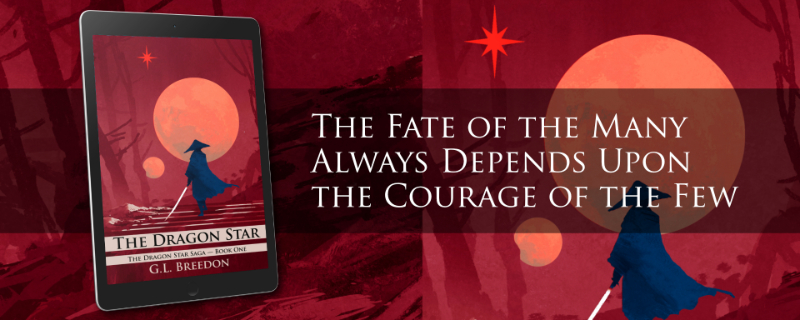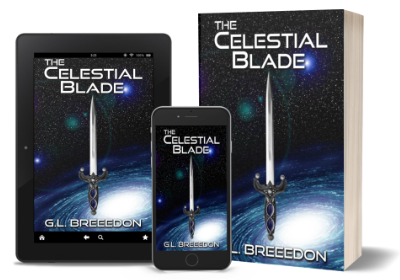The more I worked on creating the world and thought about the overarching story of a new god appearing to people in their dreams and urging them to a pilgrimage toward the Forbidden Realm, the more stories and characters started to pop up. Seven story arenas is a lot for a novel, especially when I knew that all of them would feature more than one POV character. I felt it was important to tell the story of each scene, each chapter, from the most appropriate character’s perspective, rather than always being tied to one view point. I knew this would be more difficult to write – not simply because of the need to create so many more well-defined characters – but because it isn’t something readers are generally used to. Fortunately the success of series like Song of Ice and Fire and Wheel of Time have helped fantasy readers become more accustomed to novels with large POV casts.
About that time I was reading George R.R. Martin’s Feast for Crows and found myself shocked that I had ploughed through 800+ pages and many of my favorite characters hadn’t even appeared. So I started thinking about telling the story in episodes like a TV show, like Lost in particular. I knew I wanted to focus on a different story arena with each episode and that I wanted to make significant use of flashbacks. About two years later I came across Yesterday’s Gone by Sean Platt and David Wright and realized that you could successfully create episode structured fiction in novel form. While serial fiction has become somewhat popular for a number of authors, I think I would have written the novel this way even if it wasn’t. Mostly because I’m not sure how else to tell these stories in one novel.
Something about the number seven has always attracted me, so seven story arenas felt appropriate. To solve the problem of how to follow all these stories without losing track of any of them, I decided on a strict seven act structure for each episode, a plot scaffold that would allow me to feature one primary story arena per episode while also giving ample time to a secondary story arena, and using the remaining five to fill in between them. This way every episode would have a central story and touch upon all the others as well. It also meant that each story arena would be featured as both the primary and secondary story at least once throughout the novel. Plenty of time to tell interesting adventures for each.
After I had the structure to tell the story, I needed to figure out how make the numerous flashbacks function within that framework. While I was influenced by Lost in my interest in using flashbacks to tell a story, it was Justin Cronin’s The Passage that convinced me it could work in a novel. I think he does an amazing job making the flashbacks integral to the story being told in the present. I wanted the flashbacks of The Dragon Star to be more than simply backstory, I wanted them to inform the reader about who the character really was, and have the memory that triggered the flashback inform the action the character would take in the present, or inform why they had taken a recent action.
Needless to say, it took months to work out the plot of the seven episodes of volume 1, figuring out when each character of each story arena took the stage and which ones needed flashbacks at which points and how those flashbacks would affect the action of the story, not to mention the themes of the individual episodes. It made me a bit jealous of those folks who can write novels without plotting them out in advance.
Shortly before I started writing the first of what I believe will be seven volumes in the Realms of Shadow and Grace series, I had a day dream about the series being completed, thinking that I could always release the individual stories as separate novels at that point. Then it dawned on me that I could easily hyperlink the story arenas and character storylines to allow readers to the same thing one ebook. For a while after finding the site Chronologically Lost, I contemplated linking the books to allow them to be read in chronological order as well, but I abandoned that idea as being both too confusing for the reader and too difficult to implement. Currently ebook readers (or re-readers) can follow both individual story arenas or character storylines throughout the book. So there are at least eight ways to read the novel. And while I still think the novel is presented in the best reading order, hopefully readers will find the links a fun and interesting way to explore the story.
The writing started off slow in the summer of 2014, but I eventually felt more confident in what I was doing and got up to my usual pace of around 5000 words a day. It seems like a lot, but I don’t really write that fast, so 5000 words is a long day. The first draft of the novel took 3 months and clocked in at around 260,000+ words (it’s hard to tell exactly as the word counts of Scrivener and Word don’t match up so well). Editing, due to the time suck of the day job, ate up well over a year. Part of that is the number of times I go through the text and the length of novel. I’m hoping I can manage to bring out the second volume on a similar timeline. I would love to publish the novels faster, but I don’t want to risk the quality of the writing or the storytelling to do so. I know the general advice for indie authors is to write lots of novels fast, but I think that tends to create a lot of disposable art. Not that many quickly written novels aren’t entertaining, but that they aren’t things that I generally have any desire to ever return to later on. I’m hoping that the extra effort that I put into these longer novels will pay off in producing works that people enjoy reading more than once and that linger in the mind for years. But I’ll settle for readers thinking they are entertaining.
While I do have a broad outline for the series, I have a lot of work to do on the plot for the next seven episodes of Volume 2. I’m excited to see what the character get up to. I’ll post about the progress when there is progress to post about.


